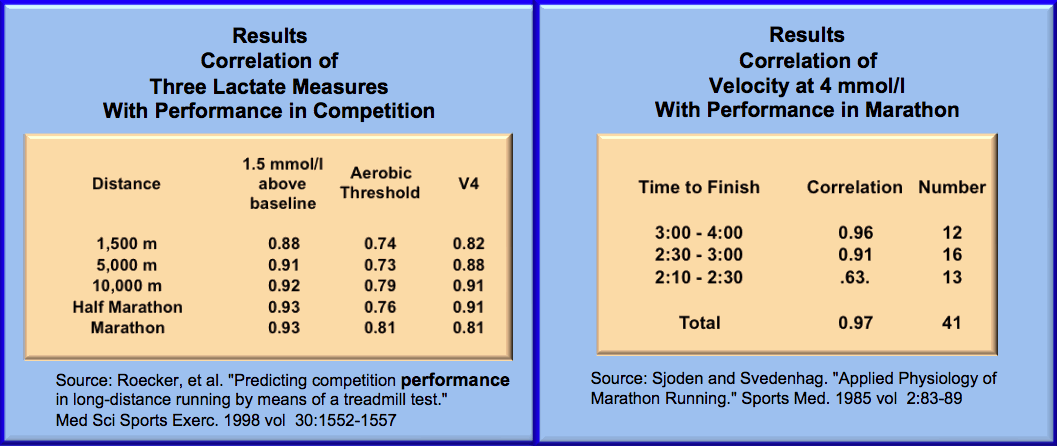Endurance Events and Lactate Testing
With Emphasis on the Triathlon
1 of 19
What is the MaxLass?
Why is it so important?
A simple lactate test protocol provides many important indications for appropriate training. However, the ultimate goal, optimal performance, requires more lactate tests, appropriately timed. A regular evaluation of actual training (stimulus) and the lactate test results (reflecting training response) provide the real benefit of lactate testing and allows the coach or athlete over time to determine each athlete’s “best training practices”.
(The previous statement is from Jan Olbrecht’s who has years of experience working with elite athletes. Dr. Olbrecht was the training adviser for Luc van Lierde, two-time Ironman World champion, holder of the record for the fastest Ironman at Kona and the fastest Ironman ever completed until 2011 (7:50 in Ironman Germany 1997). Dr. Olbrecht also provided training advice to several other world champions and Olympic medalists in swimming and rowing in addition to his work with triathletes. He is the author of one of the best books on training, “The Science of Winning.” This site is full of his ideas on how to optimally train athletes.)
Maximal Lactate Steady State
This is the first of three modules that together provide a short rationale for lactate testing and specifically lactate testing for the triathlon and endurance races. We hope to convince you that lactate testing is important in training not only for the triathlon and other endurance sports but for any sport. The material discussed in this webpage will change the way you look at training. To begin, a couple important points about performance in endurance sports and to answer the question above which starts this module:
First, there exists a maximum effort in any racing discipline (swimming, cycling, running, rowing, canoeing, kayaking, skiing, speed skating etc.) that an athlete can continue for at least an hour without having to slow down.
This pace once was called the maximal steady state speed. But sports scientists observed that as long as the athlete maintains this effort level his or her lactate level remains constant. At small increases in the effort level above this pace, the athlete’s lactate level will rise slowly and he or she will be forced to stop, sometimes within a few minutes or sometimes after an extended period of 20-30 minutes. Above this maximal lactate steady state there are no more steady states but an inevitable and frequently rapid progression to exhaustion. The name of this pace was changed to Maximal Lactate Steady State pace (MLSS or MaxLass) to reflect this phenomenon. Other names have been associated with this pace such as the anaerobic threshold, the lactate threshold and the onset of blood lactate accumulation (OBLA). However, these three terms have slightly different meanings depending upon who is using them and what is being discussed. We use the terms interchangeably with MLSS in our document but recognize that they have a variety of origins and other uses.
The relevance of lactate in the preceding phenomena has been highly debated over the years. Many have claimed that lactate itself is not a source of fatigue. We agree with that. However, no one has disputed the relationship between lactate and the maximal lactate steady state or claimed that MLSS does not exist. What causes an athlete to stop when he exercises for an extended time above the MLSS is not entirely known. But whatever it is correlates nearly perfectly with the accumulation of lactate in the muscle. The most likely reason is that when lactate is produced, hydrogen ions are also produced and these hydrogen ions cause the muscle to become much more acidic and this then inhibits contraction.

maximal lactate steady state for a runner
Second - the maximal lactate steady state or the lactate threshold is the single best indicator of endurance performance.
Generally the athlete whose MLSS is at the higher effort level (speed or power) will be faster in an endurance event. Increases in the pace at which the MLSS takes place are almost always accompanied by improvements in race performance for endurance events. So periodic lactate testing (every 4-6 weeks) is usually the best indicator of potential performance in endurance events. It is also generally the best measure of how good or bad a training program is for the athlete. For short events such as most swimming, track cycling, speed skating and rowing races, the maximal lactate steady state is also highly correlated with performance. But anaerobic capacity (the ability to produce lactate and speed) becomes more important in shorter events and this has to be understood as an athlete in these sports progresses through a training season. This topic is covered in detail on our Secrets of Lactate CD-ROM. Lactate testing is the simplest, most direct way to make an evaluation of the response of the body to training and certain lactate measures correlate very highly with performance.

The correlation of lactate measures with performance in running
The interesting thing is that some are trying to change the name and definition of this concept and essentially conceal the physiology behind this phenomenon. In the process they are shortchanging the athletes they are advising. Understanding and measuring all the factors that cause the MaxLass is essential for proper training. Without this understanding and measuring, one is guessing how to best train the athlete.
Continue on to Module 2 which provides an important insight into what determines how fast one is in a race and utilizes the physiology behind MaxLass to explain why some are better than others at different distances.
